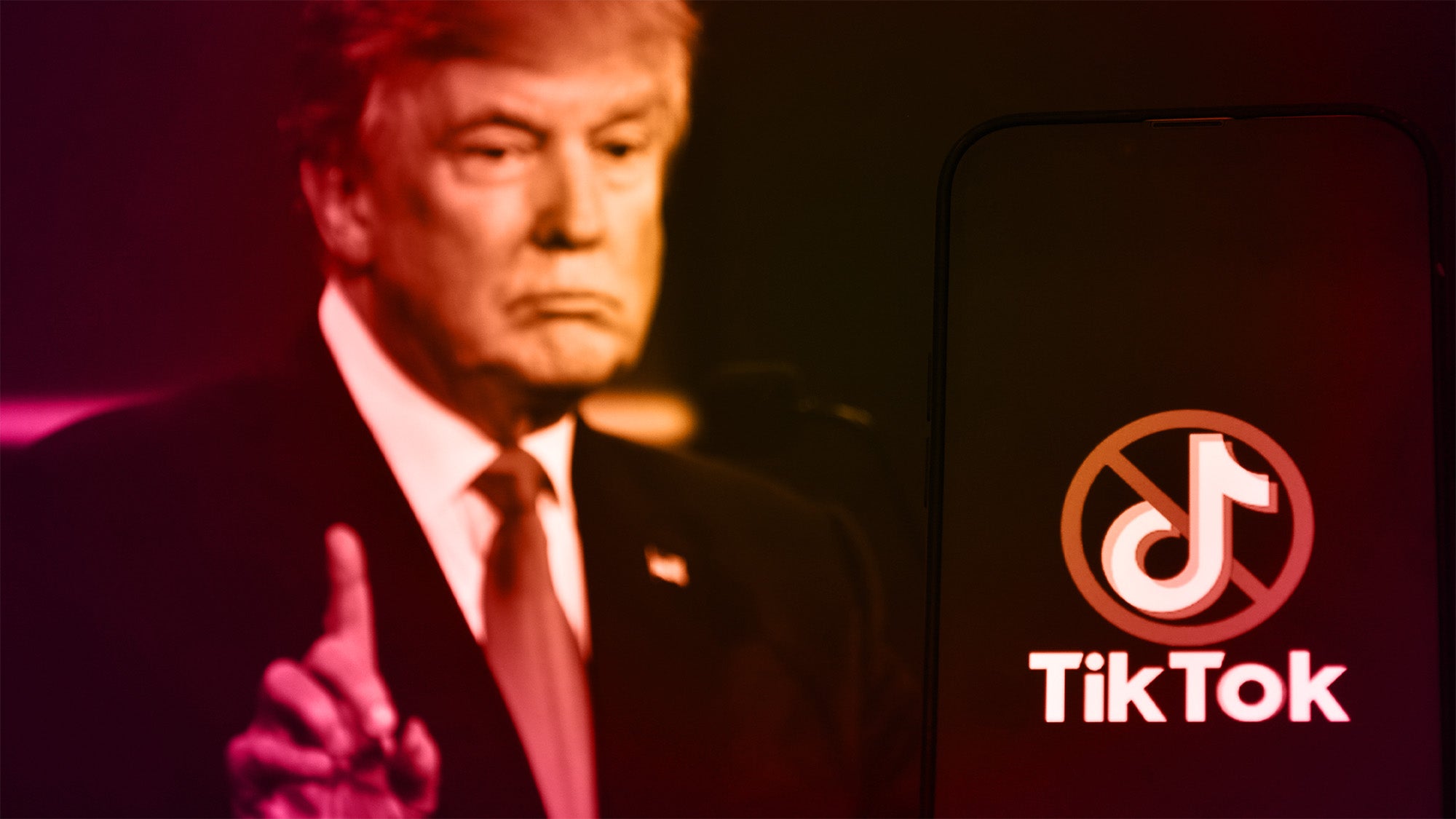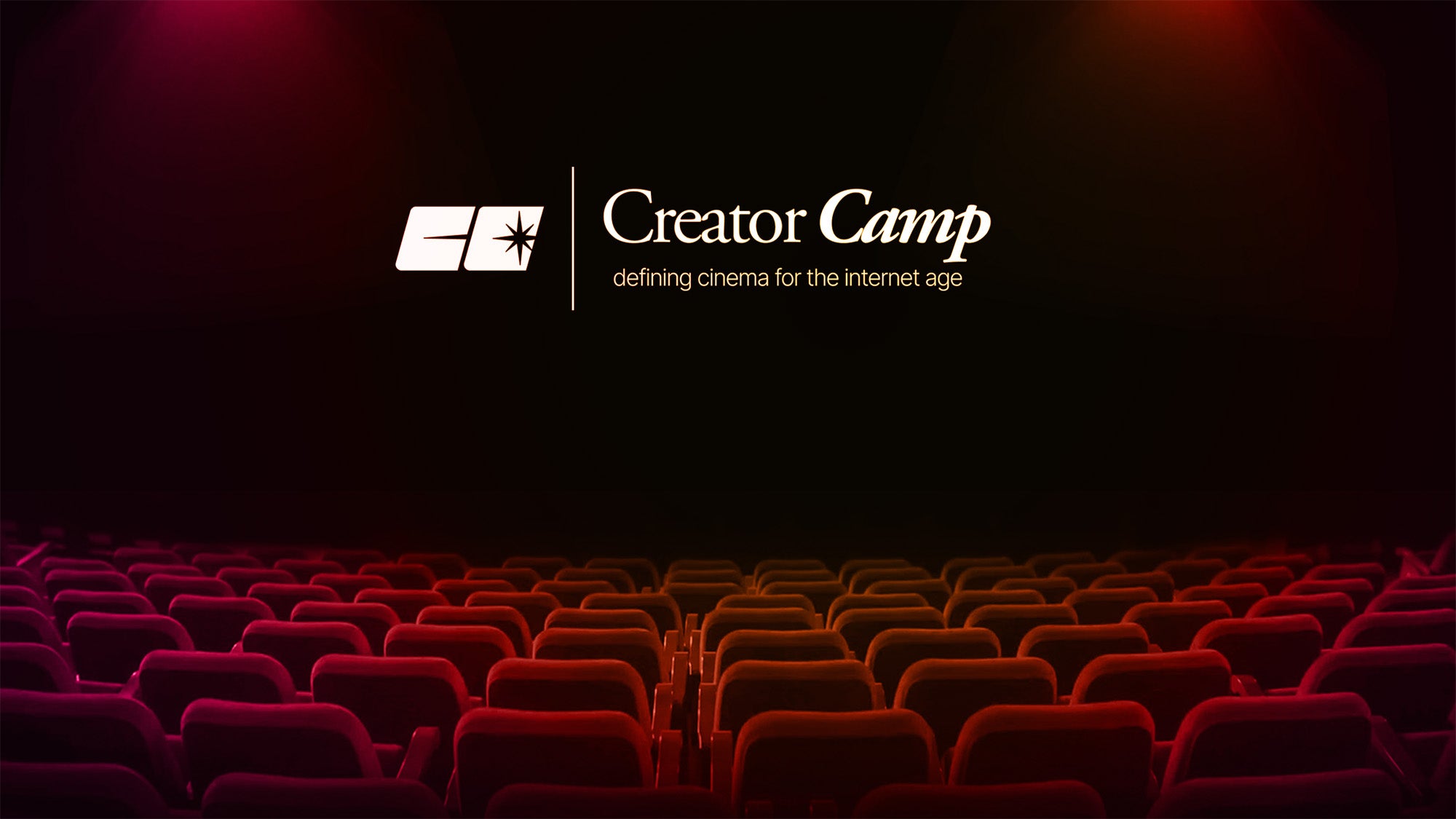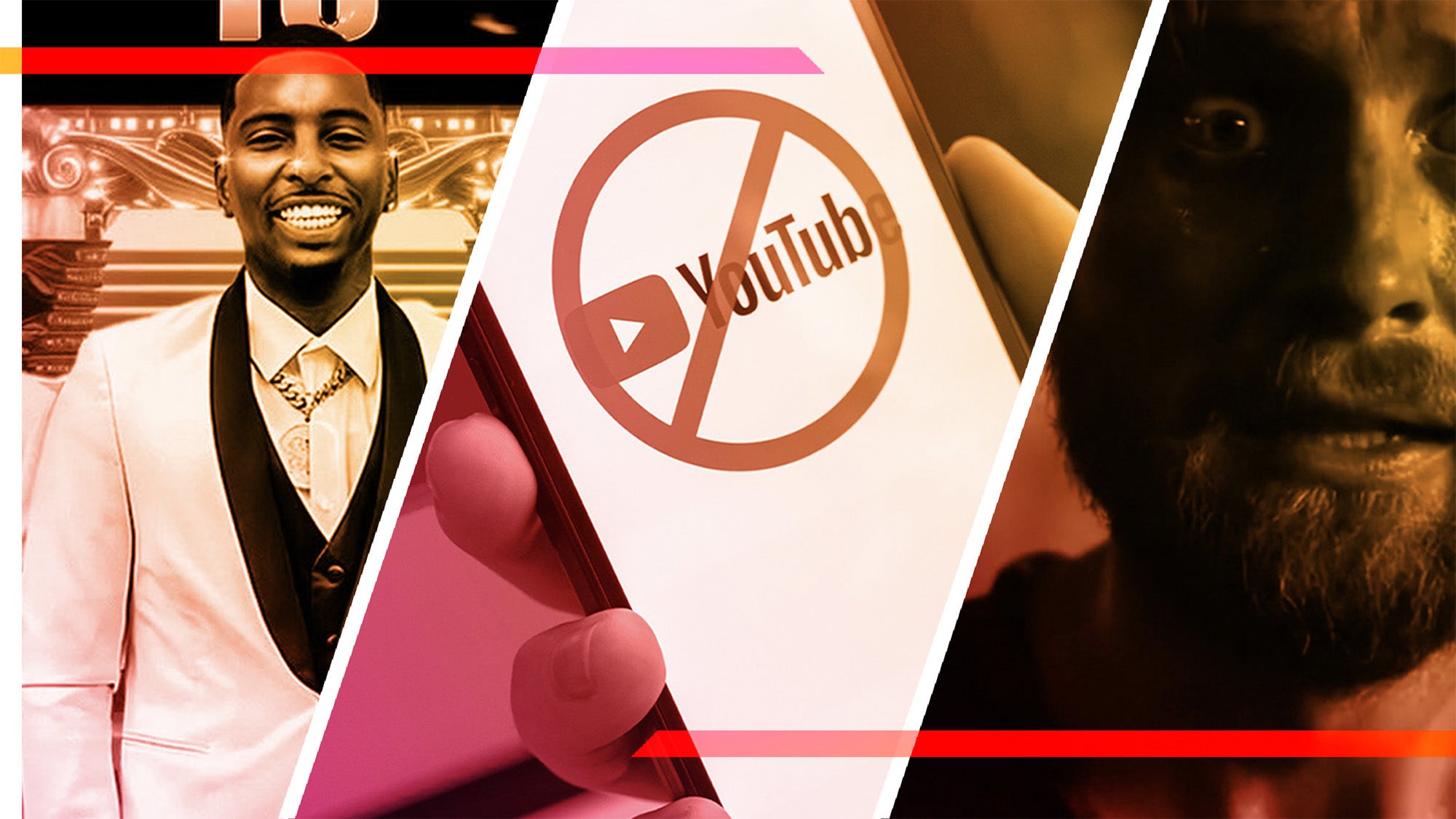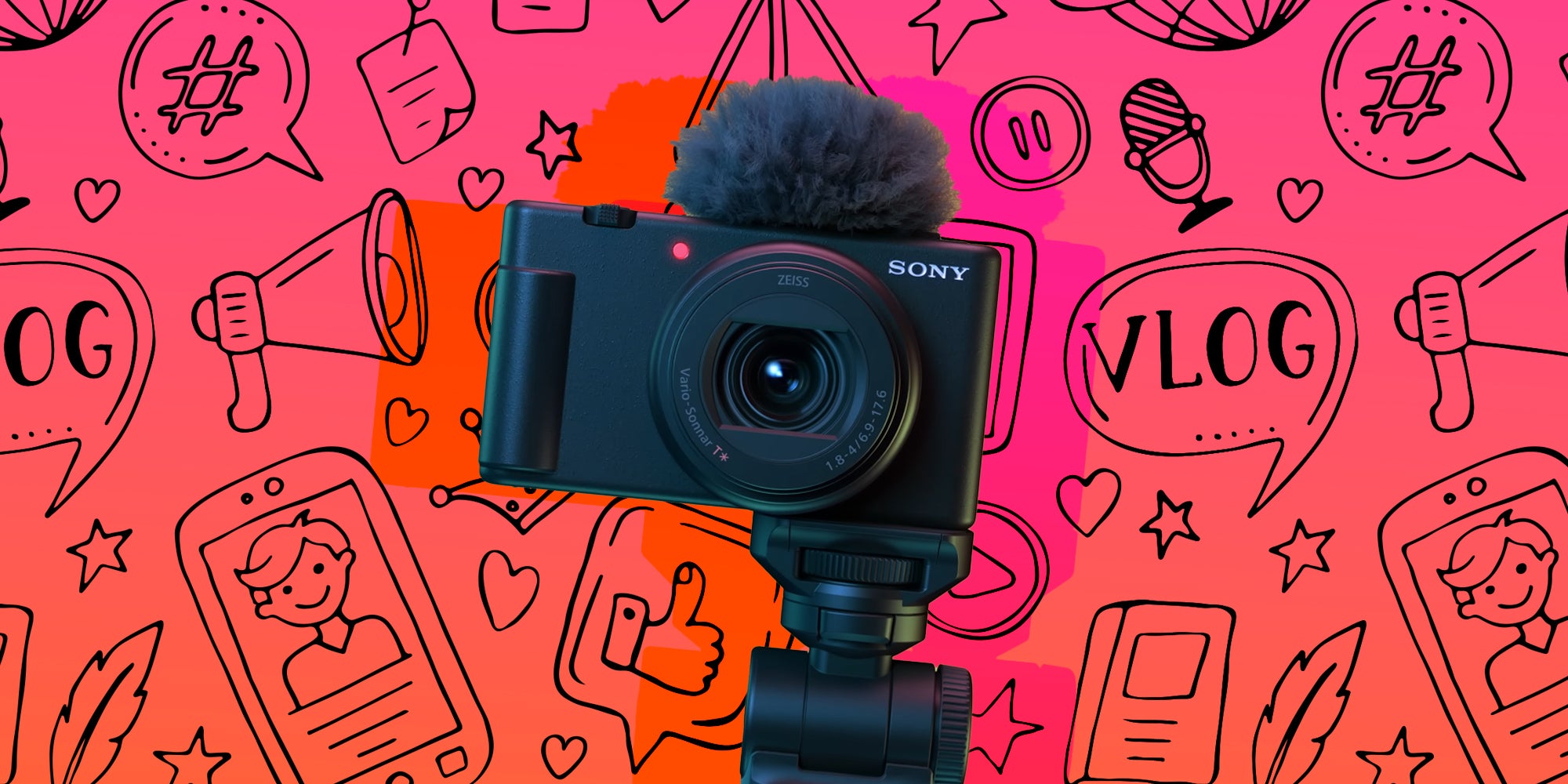
So, you’ve chosen to start vlogging. First off, congratulations. Welcome to the party; for the love of god, don’t read the comments. Before you can start shooting, you’ll need to figure out a camera. For many, the first step will be to use their phone. Eventually, you’ll want to step up your game (even if you keep using your phone). Before you head to the store, here are the best vlogging cameras for your budget. Whatever it might be, finding the best vlogging camera in your price range is a key part of finding initial success.
What should I look for in a vlogging camera?
The most important thing you need for a vlogging camera is portability. It is possible to use a heavy mirrorless camera to vlog. This author personally vlogs with a Canon R5. However, its size is cumbersome, I can’t hold it while filming myself, and its lenses are incredibly expensive. The utility, price, and form don’t serve vlogging first, but as a photographer, vlogging is a secondary interest.
When picking your gear, you want to find something you feel called to create with, whether that’s a cheap vlogging camera or a higher-quality piece of gear. For some folks, that might be a heavy camera you need a tripod for. But vlogging is as much about your adventures as the stories you tell at home. Consider getting something light with excellent autofocus, a flip-out screen to see yourself, and a good microphone. Every feature built into the camera is another piece of gear you don’t need to buy.
Here are the best cameras to get you started.
What is the best vlogging camera for my budget?
1) Best All-Around Vlogging Camera – Sony ZV-1 II
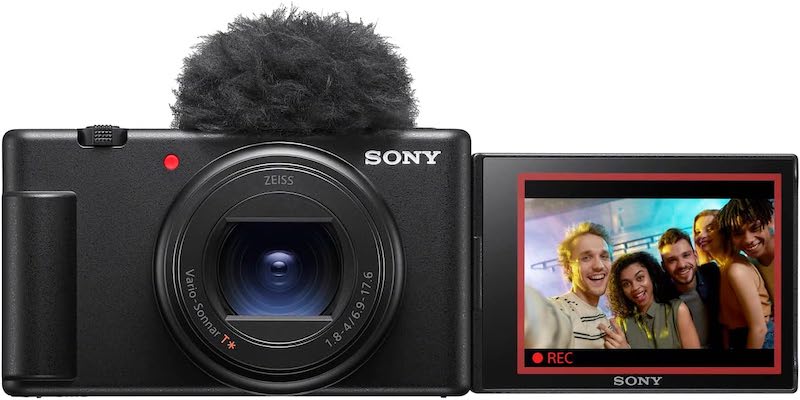
Sony’s ZV-1 II is the best camera, explicitly built with vlogging in mind. This is a storytelling machine, from its incredible microphone to its 1.0-type sensor that makes it sing in low light.
What does the Sony ZV-1 II cost?
The ZV-1 II costs $899. However, it also is a complete package– this is a good vlogging camera, well worth its high price ticket. You don’t need to pay for extra lenses or an external microphone. It comes out of the box ready to use.
What’s Great About The Sony ZV-1 II?
Weighing just over half a pound and measuring 4.15 x 2.36 x 1.84 inches, the Sony ZV-1 II packs powerful creative tools in a tiny package. Right off the bat, the star of this camera is its 18-50mm zoom lens, helping solidify its place as the best vlogging camera you can get for under $1000.
This ultra-wide lens brings the story to you, capturing everything from action to tight closeups with razor-sharp results. The lens’ aperture range of F1.8-4.0 allows for stunning defocused backgrounds or crisp vistas when needed. There’s even a bokeh button to activate background blur on command.
Sony’s Real-time autofocusing and Eye-AF tracking, paired with the ZV-1 II’s flip-out screen, never miss a step, even when you’re walking while shooting. The built-in 3-capsule mic delivers crystal clear audio and even supports a windscreen for outdoor shooting. You can adjust color levels and brightness to match your surroundings using the My Image Style setting. There are also creative video presets for when you’re looking for inspiration.
The ZV-1 II is great for shooting standard vlogs, but I also adore the Cinematic Vlog Setting. When looking for the best vlogging camera, emulating the greats is always a good goal to keep in mind. With Cinematic Vlog enabled, the camera takes on the Cinemascope aspect ratio and starts shooting at 24fps. This is the film industry standard frames per second, giving your content a look more in keeping with TV or movies than YouTube.
Should you run out of battery while shooting, you can plug in an external power bank to keep shooting or switch out its batteries. While the Sony ZV-1 II works best with a gimbal or handle, it shoots remarkably smooth video, even in handheld mode. If it’s within your budget, the ZV-1 II combines form, function, and power perfectly.
Where does the Sony ZV-1 II need work?
If anything holds the ZV-1 II back, it’s the camera’s battery life and the lack of built-in speakers. On the battery front, while you can replace the battery if you run out of juice, I still found it struggling to keep up with long continuous filming. However, the ability to plug in a power bank to extend its battery life softened this issue.
As for built-in speakers, I wish it was easier to check the sound of the beautiful footage the ZV-1 II shoots. The lack of built-in onboard speakers wouldn’t be an issue if Sony had included a headphone jack. Sadly, they didn’t.
That means if you want to check the audio levels for your environment, you’ll need to record a short clip, check it on your laptop, and then put your memory card back. I get that the microphones are the ZV-1 II are great. But we shouldn’t have to take sound for granted.
2) Best Budget Version Of The Best All-Around Vlogging Camera – Sony ZV-1F
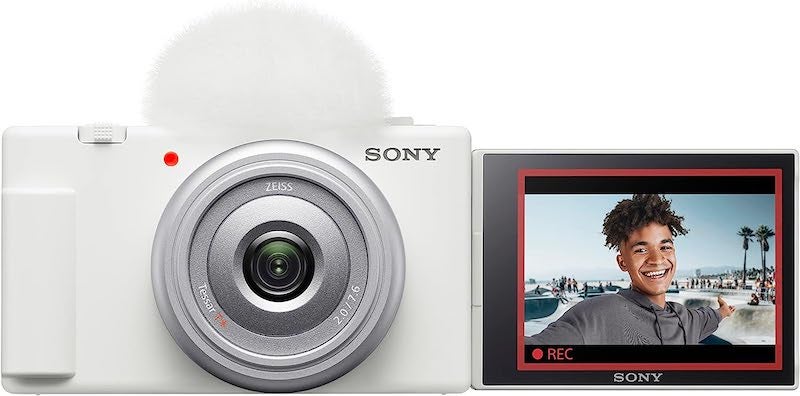
Not everyone needs the power or function of the ZV-1 II or can afford the cost. Thankfully, Sony’s got a slightly less powerful cousin to the ZV-1 II waiting in the wings. Meet the ZV-1F.
What does the Sony ZV-1F cost?
Sony’s ZV-1F will set you back $498 and has no other built-in costs. For example, you won’t need to buy lenses, microphones, or other accessories to use it beyond providing a memory card. This makes it a top contender for the best budget vlogging camera for those exploring a middle-of-the-road price range.
What’s Great About The Sony ZV-1F?
The ZV-1F is an intro-level version of its more powerful relative, delivering great sound, video, and features for half the price. While you’ll notice some differences, this is still an incredible camera. The ZV-1F has an ultra-wide 20mm F2 lens for capturing everything around you, even when held in your hands. Sony also included the bokeh button for quickly blurred backgrounds.
This is a good vlogging camera that won’t set you back too far, and is well worth its price. With its large 1-inch sensor, your ZV-1F can capture everything from brightly lit rooms to frustrating low-light situations. Featuring Sony’s Eye-AF and powerful autofocusing, this is a great camera to learn while you walk around shooting. Even on the most active shoots, the autofocus keeps your face clear as day. Coupled with the flip-out screen, this camera is ready to document your next road trip.
Like its older cousin, it features a direction 3-capsule mic and comes with a windscreen for whatever nature throws at your recording. There’s even a Product Showcase setting that tells the camera to focus on objects in the center screen. It might not have all of the features of the ZV-1 II, but its ease of use and powerful features make it a steal, especially for $400 cheaper.
Where does the Sony ZV-1F need work?
Like the ZV-1 II, the ZV-1F does not have a headphone jack or built-in speakers. It’s deeply annoying to be asked to take sound levels for granted without pulling out your laptop. And, while you will save money, it’s clear where you’re saving money over the more expensive option, making it more akin to a cheap vlogging camera option than some may initially realize. The 20mm lens is sharp but limited. Eventually, you’ll miss the ability to zoom in for greater details.
Still, the ZV-1F is a budget-minded camera for new vloggers that delivers far more features than you might expect for the money. Especially given it comes from a company as respected as Sony.
3) Best Compact Vlogging Camera – DJI Pocket 2
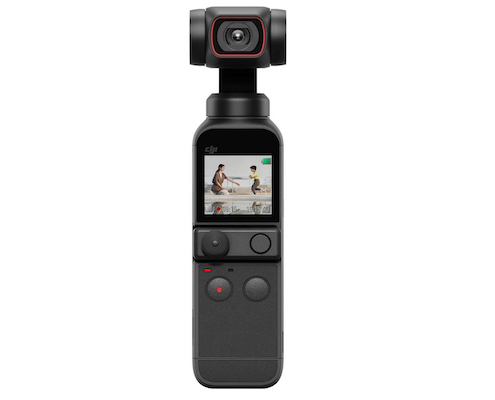
If holding a traditional physical camera, with or without a gimbal, gives you stress, the DJI Pocket 2 is here. Combining a camera and gimbal into a 4.91” package, the DJI Pocket 2 is tiny and powerful.
What does the DJI Pocket 2 cost?
For a cheap vlogging camera that does it all, consider the DJI. The DJI Pocket 2 costs $349. However, like the other cameras on this list, you won’t need extra lenses or a microphone to start vlogging with it.
What’s Great About The DJI Pocket 2?
Imagine having a 4K camera in your pocket with a built-in stabilizer and tracking autofocus, and then buy the DJI Pocket 2. This is the perfect camera for hikers, travel vloggers on an adventure, or just covering live events. Its 64MP camera and 1/1.7 inch sensor capture your experiences in beautiful detail, even in low light.
ActiveTrack 3.0 keeps an impressively steady focus on moving subjects, which works equally well for shooting a vlog or skate video. Its 20mm f1.8 lens delivers a sharp, wide angle for vividly capturing yourself and your surroundings, making it a content-worthy pick for the best affordable vlogging camera out there.
Not sure how to pose for the camera? The built-in Glamour Effects will help you achieve the perfect selfie and angle every time. This model boasts four microphones, delivering sound from multiple directions. You can easily control which mics are used, perfecting the sound for your needs. If you need to fine tune, the Audio Zoom and Soundtrack features can help focus the sound where you want it. There’s even built-in wind noise reduction.
With 3-axis stabilization from its built-in gimble, you’ll always get a smooth image, even if you’re shooting on a hike or moving quickly. Even just using the camera to shoot photos is a joy, with the gimble-reducing shake for extra sharp pictures. That’s extra handy when you’re looking to take featured images for a YouTube video.
Finally, it’s tough to overstate just how small the DJI Pocket 2 is. It’s easy to throw in a fanny pack or purse on the go. And, with 140 minutes of battery life in ideal conditions, it can handle an evening of adventuring. It even co
Where does the DJI Pocket 2 need work?
As we mentioned previously, a cheap vlogging camera can come with some limits. Like the other cameras on this list, the DJI Pocket doesn’t have a speaker or headphone jack. There is a 3.5 jack for attaching an external microphone, however. DJI does have an accessory that adds a speaker, wireless audio reception, and wireless image transmission.
Given the DJI Pocket 2 size, these issues are minor complaints. This is one of the market’s most compact and feature-rich vlogging cameras at this price point.
4) Best Gimble To Vlog With Your Smartphone – DJI Osmo Mobile 6
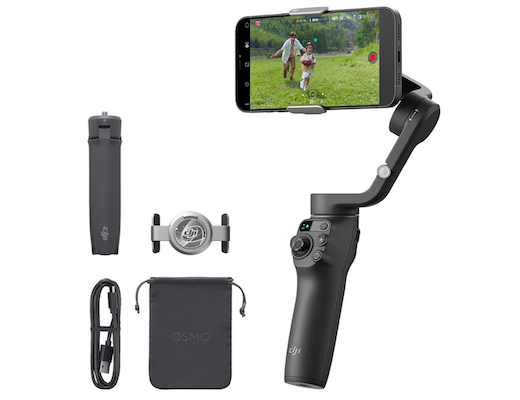
The best affordable vlogging camera is one you don’t have to buy, right? For many people, the best vlogging camera will be their own smartphone. You can stream or shoot content directly in your favorite apps, don’t need to buy a new camera, and already carry it daily. However, that doesn’t mean you can’t step up your vlogging game. The DJI Osmo Mobile 6 gimbal can take your smartphone videos from personal to professional and turn your phone into the best vlogging camera for your immediate needs to get started.
What does the DJI Osmo Mobile 6 cost?
The Osmo Mobile 6 costs $159, though you can often find it cheaper at retailers like Amazon.
What’s Great About The DJI Osmo Mobile 6?
A good vlogging camera is gonna have to help your videos shine. The Osmo Mobile 6 is an intelligent smartphone gimbal that gives you greater control and stability with your videos. Utilizing a 3-axis gimbal, the Osmo Mobile 6 keeps your camera steady during movement, even while recording while running. Its built-in extension rod gives you the enhanced angles of a selfie stick with a gimbal’s precision. With the Mobile 6’s handle controls, you can adjust settings, hit record, and more one-handed.
Your phone attaches to the Mobile 6 via a handy magnetic back, letting you quickly set up and break down on the go. Mobile 6 also has a stand for solo shooting when you need to step away from the camera. I also love the side set manual focusing wheel for setting up stops and adjusting focal length while shooting.
Most remarkably, Osmo has made the Mobile 6 incredibly user-friendly for new users. There are tutorials that teach you how to get specific kinds of shots. The Mobile 6 recording app has an AI-powered editor that recognizes your scenes and helps you organize them for later. And, if you’re ever just looking for inspiration, many templates are waiting to help spark your creativity.
The star of the show, however, is the ActiveTrack 6.0 technology. Whether you’re filming yourself working out or running animals, OM 6’s ActiveTrack tech will keep the camera directly on your subject. This is particularly useful for self-shooting vloggers who move a lot while they talk.
This gimbal weighs just over half a pound and is remarkably light and compact. You can easily fold it up, throw it in your bag, and head out on an adventure. The battery runs strong for hours of use. You’ll probably need to charge your phone before you use the gimbal, especially if you’re shooting in 4K.
Simple, easy to use, and powerful, I highly recommend the Osmo Mobile 6 for new vloggers who already have a great camera phone.
Where does the DJI Osmo Mobile 6 need work?
Turning your phone into the best vlogging camera for your budget is easy with this gimbal, but it may not be your forever solution. The Osmo Mobile 6 is an incredible tool, but will always rely on your phone. If your phone is broken or lost, you won’t be able to vlog with this tool. That’s the trade-off of not having a stand-alone camera for your adventures. Some Android users have also reported issues with using the OM6 app for recording. That said, every creator must learn it’s okay to try out equipment and send it back if it doesn’t work with your setup.
How Much Should You Spend on a Vlogging Camera?
The amount you should spend on a vlogging camera depends on your needs, experience level, and budget. For beginners, a budget of $300-$600 can get you a decent camera with good video quality and essential features like image stabilization and a flip screen. If you’re more experienced or want higher production quality, spending $700-$1,500 on a mid-range camera with 4K capability, better autofocus, and advanced audio options is advisable. For professionals, investing $1,500 or more in a top-tier camera ensures the best video quality, low-light performance, and flexibility in accessories.
What Other Vlogging Accessories Should You Get?
In addition to a good vlogging camera, several accessories can enhance your vlogging setup:
- Microphone: An external microphone, like a shotgun mic or lavalier, significantly improves audio quality compared to built-in camera mics.
- Tripod/Gimbal: A sturdy tripod or a handheld gimbal stabilizer helps keep your shots steady, especially during movement.
- Lighting: Portable LED lights or ring lights can improve lighting in various environments, making your videos look more professional.
- Extra Batteries: Having spare batteries ensures you won’t run out of power during long shoots.
- Memory Cards: High-speed, large-capacity memory cards are essential for storing high-quality video footage.
- Camera Bag: A durable camera bag protects your gear and keeps everything organized when you’re on the go.
- Wind Muff: A wind muff (or dead cat) reduces wind noise when filming outdoors.
These accessories help improve the overall quality and convenience of your vlogging experience.

